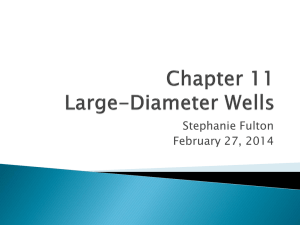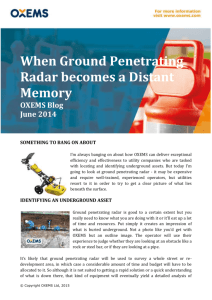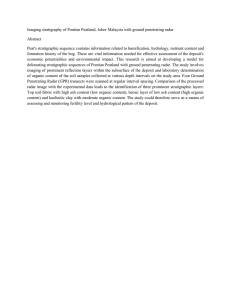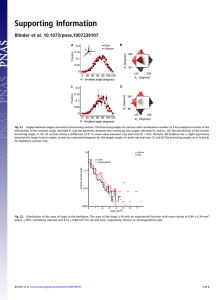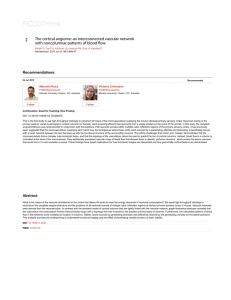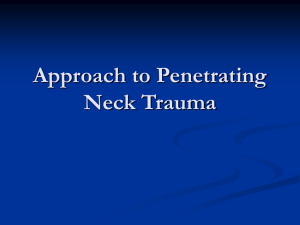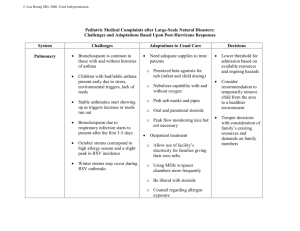PENETRATING INJURYOF HEAD AND NECK BY THE * Dunmade A.D., (FMCORL, FWACS)
advertisement
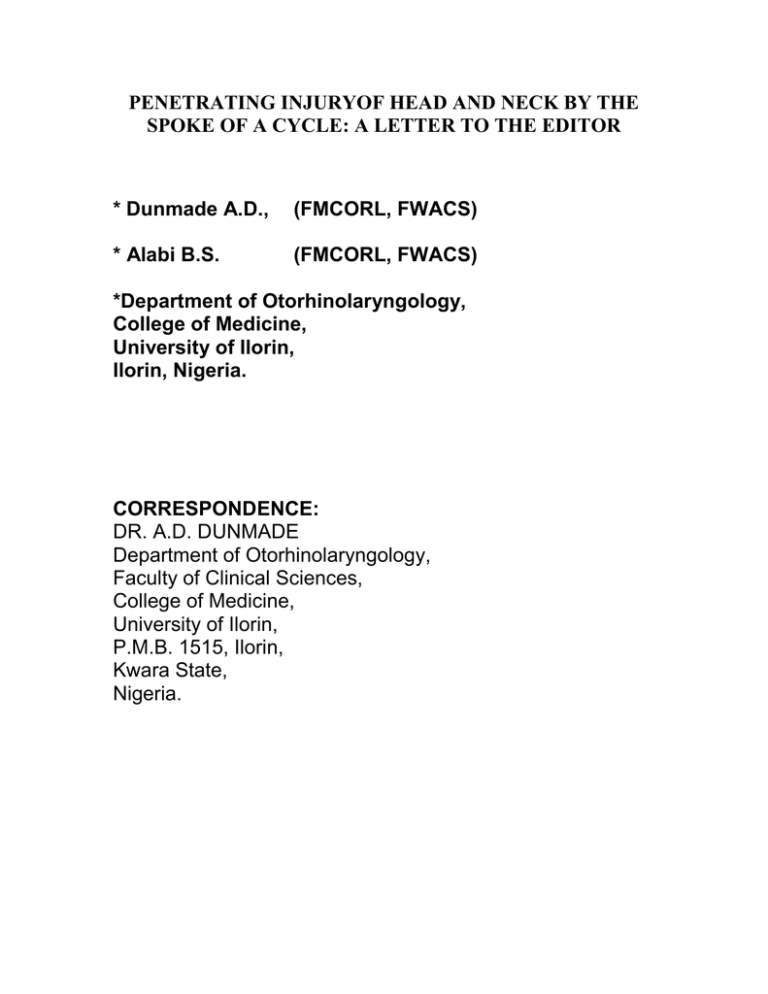
PENETRATING INJURYOF HEAD AND NECK BY THE SPOKE OF A CYCLE: A LETTER TO THE EDITOR * Dunmade A.D., (FMCORL, FWACS) * Alabi B.S. (FMCORL, FWACS) *Department of Otorhinolaryngology, College of Medicine, University of Ilorin, Ilorin, Nigeria. CORRESPONDENCE: DR. A.D. DUNMADE Department of Otorhinolaryngology, Faculty of Clinical Sciences, College of Medicine, University of Ilorin, P.M.B. 1515, Ilorin, Kwara State, Nigeria. ABSTRACT Penetrating injury to the skull is very rare in children, head trauma is exceedingly common. Most of the management and follow up of such injuries are based on the adult literature. We report a case of spoke of a cycle wheel penetrating through the head in a 4-year old child. Key Words: Spoke of a cycle; Wheel Penetrating injury; child head. 2 ABSTRAIT Alors que la lésion de la crâne est rare chez les enfants, le traumatisme dans la tête est assez banal. Dans la plupart, l’administration de ces blessures est basée sur celle des adultes. Nous lapportons le cas d’un rayon d’une roue perçant la tête d’un enfant de 4 ans. MOTS CLÈS : Le rayon d’une roue, La blessure perçante, La tête de l’enfant 3 INTRODUCTION Patients who sustain penetrating injuries to the head and neck face heavy tissue damage and eventually life threatening conditions. Head trauma is exceedingly common in children, but rarely presents as a penetrating injury to the skull 1. The course and the extent of the penetrating injury as well as the cause of the injury play very significant factors that determine the degree of injury2. Penetrating neck trauma in children may lead to potentially life threatening injuries 2,3,4. The Spoke of a cycle wheel penetrating through the head is an uncommon life threatening injury and it poses a challenging problem. Here we report a rare case of a post auricular penetrating spoke from the throat through the tonsillar fossa. The possibility of simple removal without any major neurological sequlae is highlighted. 4 CASE REPORT Y.I, a 4½ year old male patient was rushed into the Ear, Nose and Throat Clinic of the University of Ilorin Teaching Hospital on 4/6/05 by his father with history of penetrating iron rod in the mouth protruding out at the back of the right ear. He claimed it was noticed one hour before presentation. The father did not give detailed account of how the iron rod got to the throat Examination revealed an obvious penetrating rod through the post auricular region of the right ear with point of entry through the right side of the soft palate after the posterior faucial pillar in the oropharynx fig 1a & b. Apart from minimal blood stained saliva, trismus and the base of the spoke in the throat, other findings were essentially normal. Vital signs within normal limit A diagnosis of penetrating injury in the head through the oropharynx was made. The child was to have urgent skull x-ray AP & Lat, PCV and for emergency removal in the theatre. The father of the child complained bitterly that he was not having money for all these. With the contribution of money from the clinic staff, antibiotics was bought, x-ray skull done and patient was booked for emergency removal in the theatre. It was at the X-ray department after the 1st AP view that the father removed the penetrating rod Fig. 2. The child was however stable. The exit wound shows minimal serous ooze in the throat with blood stained saliva. 5 The child was admitted for observation and was placed on T.T., antibiotics and IVF. The post auricular wound was dressed. One hour later, the child was met asleep the father could not buy any further drugs and he became uncooperative. He later discharged his child against medical advice and was lost to follow up. X-ray report A long structure of metallic density is seen penetrating through the region of the right ear via the right zygomatic bone to end at the region of the maxilla on the right side as well. Mild overlying soft tissue swelling is also noted. The post removal film shows some irregularity of the head of the right hemi mandible though no fracture line is demonstrated. Fig 3a & b. 6 DISCUSSION Penetrating injury cutting through the post auricular region in children is relatively uncommon. Proper initial management is essential to prevent morbidity and mortality. Good history from the parent or guardian is very necessary but may be lacking. There are instances where a child may be abandoned at the road side with penetrating nail in the skull, such a child is believed to be the source of his or her parents misfortune, or may be accused of possessing evil spirit. Thus, in an attempt to get rid of the child some wicked parents deliberately put nail in the head of the innocent child and abandon him/her at the road side. Some penetrating injury may be accidental following stride or accidental discharge of bullet. We could not get the reason why or how this 4 year old boy had this penetrating spoke of a cycle wheel in his head. Proper examination of the neurovascular and systemic physical status is a first requirement and the decision as to which approach to adopt for the removal of the penetrating injury is of critical importance. Controls of bleeding control of airway when necessary, radiological investigations and emergency removal in the theatre are the steps to be taken. Patient who sustain gun shot injuries to the head and neck face heavy tissue damage and eventually life threatening condition. A very significant factor that determines the degree of injury is the course 7 and extent of the missile’s track . The missile’s track is well correlated 1,2 with bullet structure size and velocity, which have distinct features in civilian and military firearm injuries. The entrance or exist wound may be out of sight in some injuries and often it is difficult to predict the severity of the injury. The injury may be limited to the head and neck region. Intracranial penetration with mandibular fracture, maxillary fractures, zygomatic fracture and perforating ocular trauma may be present in some cases3. Major neurological deficit does not usually manifest immediately in some cases so the penetrating injury may be overlooked. In cases of retained foreign body in the cranium or orbit severe infection complication may occur later if the patient is not properly managed. Plain radiography, computed tomography (CT) on the head may, however, fail to reveal any intracranial lesions in cases of wooden fragment penetrating injury, but a bone window CT, magnetic resonance imaging (MRI) may clearly reveal the intracranial lesions 4. Misinterpretation of this radiological finding may delay adequate treatment Primary surgical intervention may be a team approach when there are multiple fractures and complication due to the penetrating injury. Simple withdrawal of the penetrating injury in the operating room is also possible without any neurovascular injury 5,6. 8 This boy was planned for emergency removal after the radiological investigation and simple PCV, the father of the child removed the spoke of the cycle wheel in the radiology department after the 1st A/P view of the skull. In this patient following simple removal the child was stable with antibiotics, T.T. and post auricular wound was dressed. The father however absconded with the child after 6 hours of observation. 9 REFERENCES (1) Koestler J, Keshavarz R. Penetrating head injury in children: a case report and review of the literature. J Emerg. Med. 2001 Aug: 21(2) 145-50. (2) Yetiser S, Kahramanyol M. High velocity gunshot wounds to the head and neck: A review of wound balhatics mil. Med. 1998 May, 165 (5) 346-51. (3) Alper M, Totan S: Cankayehi R Songur E. Gunshot wounds of the face in attempted suicide patients J Oral Maxillofae Surg 1998: 56 (8): 930-3. (4) Matsuyama T, Okuchi K, Nogami K, Hata M Murao Y. Transorbital penetrating injury by a chopstick. Neurol-med-chir 2001, 41 (7): 345-8. (5) Sasaoka Y, Kamada K, Matumoto M, Ueda Y, Iwasaka T, Hukushima T, Nishimura A, Mushima H, Inoue M. Penetrating injury of the head Neck and chest by a nail gun: a case report. No-Shinkei-Geka. 1995 Dec 23 (12): 1099-104. (6) Cosan TE, Arslantas A, Guner AI Nurah M, Kaya T, Tei E. Injury caused by deeply penetrating knife blade lodged in infratemporal fossa Bur J. Emerg. Med. 2001 8 (1): 51-4. 10 SPOKE OF A CYCLE WHEEL PENETRATING THROUGH THE HEAD A CASE REPORT AND LITERATURE REVIEW LEGEND TO FIGURES Figure 1a: A 4 year old boy with penetrating spoke through the right side of the soft palate. Figure 1b: The penetrating rod through the post auricular region of the right Ear. Figure 2: The penetrating spoke of a cycle wheel after removal. Figure 3a: X-ray of the child showing the spoke of the cycle wheel. Figure 3b: post removal X-ray of the child’s Head. 11

